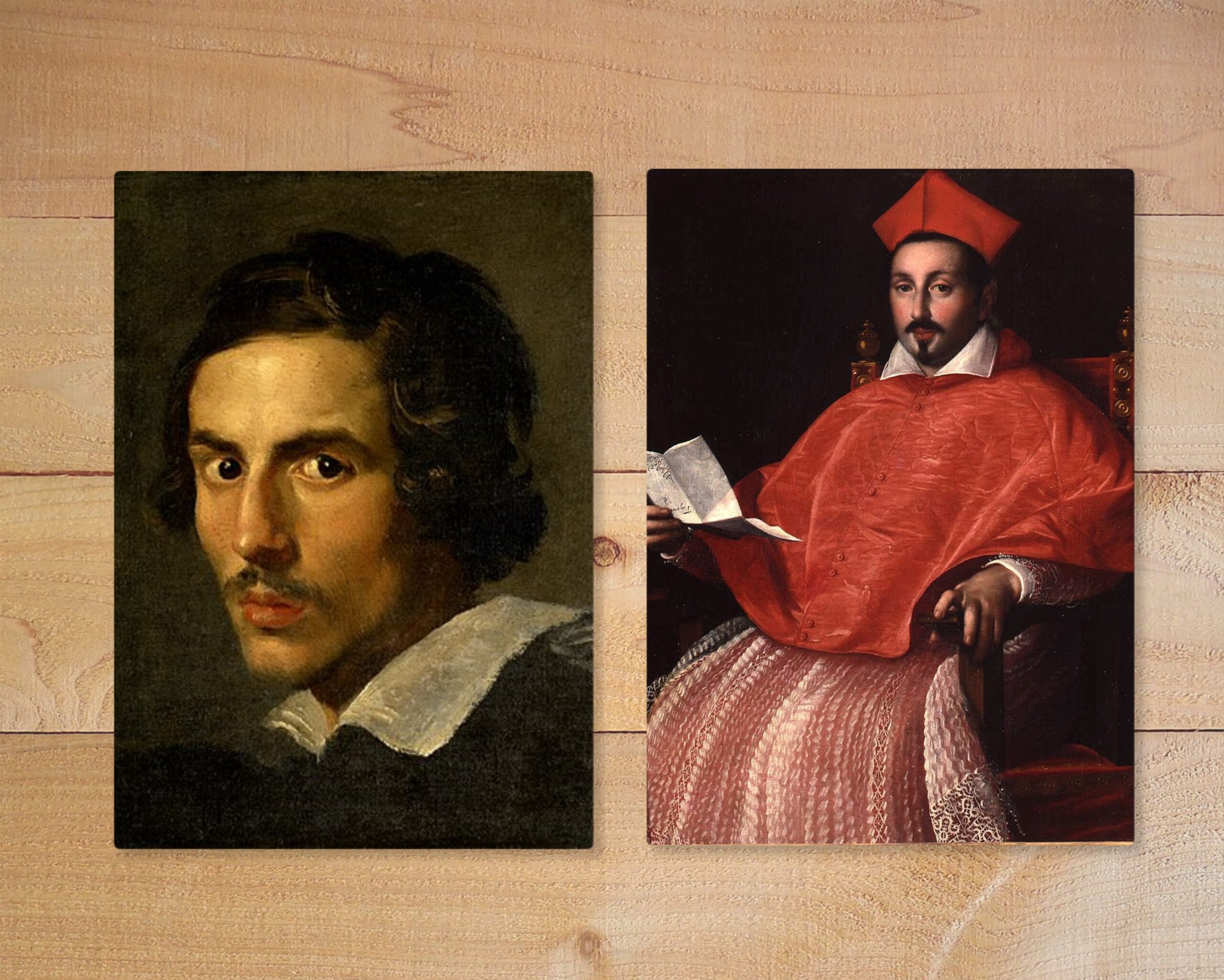(15) Bernini, a child prodigy who displays Mozart-level talent and an astonishing intellect - Also introduces the special social conditions of 16th century Rome.
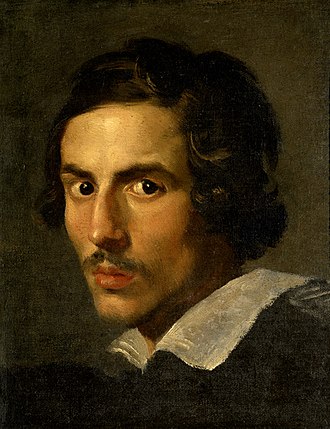
Bernini was born in Naples in 1598. His father was a famous sculptor, and his talent was also inherited from his father. Let us look at Masumi Ishinabe's commentary.
Mozart-level child prodigy, precocious genius Bernini
His father, Pietro Bellini, was a well-known sculptor, as evidenced by the fact that he served as director of the Academy of Fine Arts of San Luca in Rome for two years. Today he is regarded as a competent late Mannerist sculptor, and his surviving works in Rome suggest that he was quite a fine sculptor with a fine sense of delicacy. However, just as in the case of Leopold Mozart, had he not raised a great son, Pietro Bernini would have been known only to a few well-informed people.
It is clear from various sources that his great son, Gian Lorenzo Bernini, was a man of keen intellect. He was a close friend of the popes and Roman intellectuals, and Pope Alexander VII is reported to have said that he was amazed that Bellini was always able to talk to highly educated people with only his talents. Fr. Oliva, also a friend of Bernini's, wrote in a letter, "He is a monarch in all the glory of his art, but he has so much more understanding and wisdom in his heart that I believe it surpasses even the excellence that the world admires in him. Chantreau, who accompanied Bernini throughout his stay in Paris, testified that his quickness of understanding, his wonderful memory, and his vivid imagination gave the impression of a much better educated man than he actually was.
If Domenico's "Biography" is to be believed, the Neapolitan priest who was consulted by the father was convinced that he would be able to follow whatever path he wanted to follow. The father was worried about his son's career path, but the priest, who had already begun to play with sculpture, asked his father to teach him how to sculpt.
However, he soon discovered that "nature has given him what others learn by the sweat of their foreheads," and the father began to seriously train his son. One day, when the father saw that Bernini was going beyond the assignment and making his own drawings, he asked him how he could go beyond others by simply imitating them. Domenico tells us that his father, who was a great teacher, decided to let him study freely from then on. Such biographies of childhood are often mere rhetoric and usually not worth quoting. In Bernini's case, however, they are received with a certain realism. He was a child prodigy, a precocious prodigy, perhaps comparable only to Mozart, and rare in the history of art.
Masumi Ishinabe, Yoshikawa KobunkanBernini, Giant Star of Baroque Art.p1-2
He was a child prodigy, a precocious genius, perhaps only Mozart could compare, and one of the rarest in the history of art."
A genius on the level of Mozart. The genius who transformed Rome into a city of art was also of an extraordinary scale from his childhood.
Bernini's arrival in Rome and the state of art in Rome at that time
But all we know today about the child prodigy Bernini came after Pietro left for Rome. At the invitation of the Pope, he moved to Rome around 1605, when he was seven years old, "with many family members in tow" (Angelica is known to have had at least seven children). This move is of decisive importance for the life of Bernini. He would remain in the "Eternal City" for the rest of his life, except for a six-month visit to Paris at the invitation of Louis XIV when he was over sixty years old. No other example can be found of such a deep connection between an artist and a city: Bernini and Rome. In 1644, Louis XIII, through Mazarin, who was a friend of Bernini's, tried to invite him to France with a large annual salary of 12,000 scudi. At that time, Pope Urbanus VIII persuaded Bernini to stay in Rome, reportedly saying, "You were born for Rome, and Rome is for you.
The famous Tempesta map (1593) gives us a clear picture of what the young Bernini saw for the first time in Rome. It is a pleasure to examine the various parts of the city on this huge and accurate pictorial map, which consists of 12 large copper engravings. Comparing Tempesta's map with another excellent map of Rome, that of Falda (1676), we can see the development and changes in Rome during the time of Bellini's life. The comparison of the two maps provides us with an invaluable insight. The comparison of the two maps is immeasurably instructive because it tells us more precisely and eloquently than anything else about the legacy that Bernini left behind for Rome.
Masumi Ishinabe, Yoshikawa KobunkanBernini, Giant Star of Baroque Art.p3-4
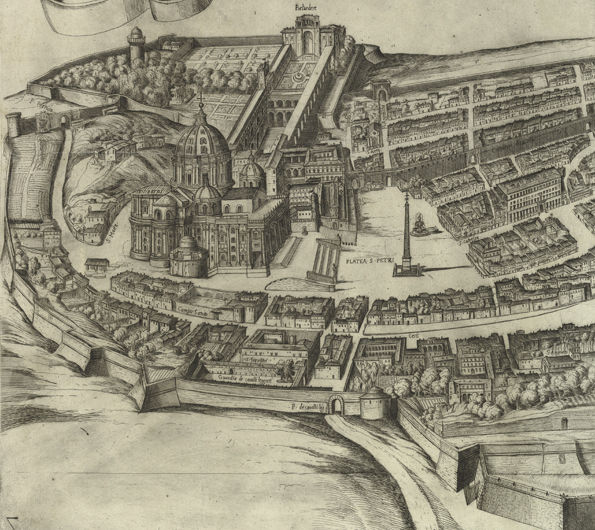
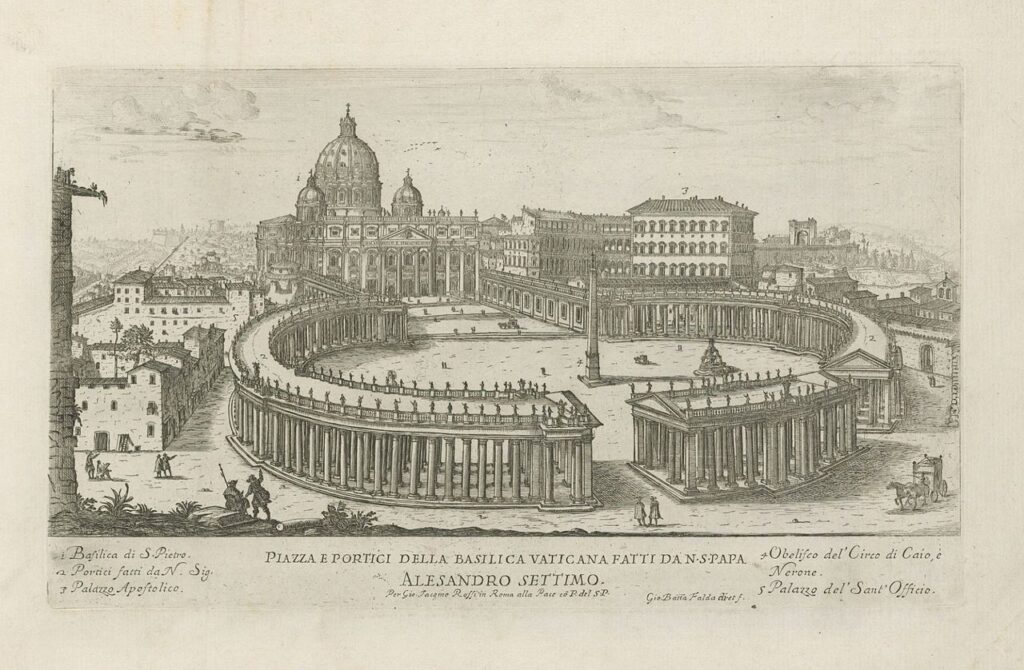
Bernini was born in Naples, not in Rome. However, he came to Rome when he was seven years old, and this is where he played an active role for the rest of his life. Urbanus VIIIFor you were born for Rome, and Rome is for you."This is a perfect example of his life's work.
Masumi Ishinabe then continues his commentary on the state of art in Rome at that time as follows.
Rome at the end of the 16th century, as seen on Tempesta's map, was a sufficiently vibrant city with a population of about 100,000. Since the "Plunder of Rome" by the Holy Roman Emperor Carl V in 1527 had swept away the optimism of the Renaissance, Rome had been enveloped in a strict atmosphere of anti-Reformation, but it gradually regained its confidence after the Council of Trier, and at the end of the century it was entering a new era of "victory of the Church". By the end of the century, Rome was entering a new era of "church triumph. As if to prove this, the population, which was 55,000 in 1527, nearly doubled, and although the general population was generally poor, the city was enlivened by construction work.
The numerous construction projects aimed at making Rome a city worthy of being the center of the Catholic world are the best evidence that Rome is emerging from the heavy atmosphere of the Counter-Reformation. In fact, the last quarter of the 16th century was a period of great construction. The number of new churches built in Rome during the 16th century is counted at no less than 53, the majority of which, with the exception of St. Peter's, were constructed after 1560. The new St. Peter's, begun in 1526, took 120 years to complete and is said to have cost 150 million scudi (about 44 tons of pure silver), the main part of which was also constructed during this period.
Pope Sixtus V, who was the author of this "rebuilding of Rome," was unusually passionate about the improvement of Rome and the establishment of the papal government, even though he was on the throne for only five years after 1585. He built at least 10 churches, built a water system, connected the main places by several straight roads, and decorated the squares with obelisks and ancient memorial columns that the Romans had brought from Egypt. His work laid the foundation for the city of Rome as we know it today. Nothing conveys a more vivid image of this pope than the story of his getting up early in the morning and taking great pleasure in going to see the progress of the construction work himself. Gregory XIII, Sixtus V's predecessor, is said to have said that construction was a mercy to the people, which all monarchs must do, and that his work helped people's lives. In Rome, a city of almost complete consumption with no significant industry, construction was the only industry that seemed to exist.
But this period of construction in the late sixteenth century did not create outstanding works of art. Practicalism dominated this period, and artists were expected to be competent craftsmen rather than creative. This is keenly felt when walking through the many churches built during this period. They may be solid works, but they lack "taste" and individuality. It is not until the end of the century that we finally find truly creative artists as opposed to these mediocre ones. It was not until the end of the century that we finally find truly creative artists, namely the architect Carlo Maderno and the painters Annibale Carracci and Caravaggio, who helped Rome move toward the "Baroque" and make it once again the site of the most advanced artistic activity in Europe. It was in Rome that the young Bernini was welcomed after leaving Naples.
Masumi Ishinabe, Yoshikawa KobunkanBernini, Giant Star of Baroque Art.p4-5
This passage makes a number of points that are very important for understanding the social conditions in Rome at that time. First, the worst incident since the beginning of Rome, the "Plunder of Rome" of 1527, is mentioned here.
The "Plunder of Rome" is also known as the "Sacco di Roma" (The Plunder of Rome). When I visited Rome this time, I was very interested in the Sacco di Roma case.
I learned about this case in a previous edition of this blog.Rome of the Popes.Thanks to the
This was a horrific event in 1527, when Rome was attacked, massacred, and plundered to the utmost.
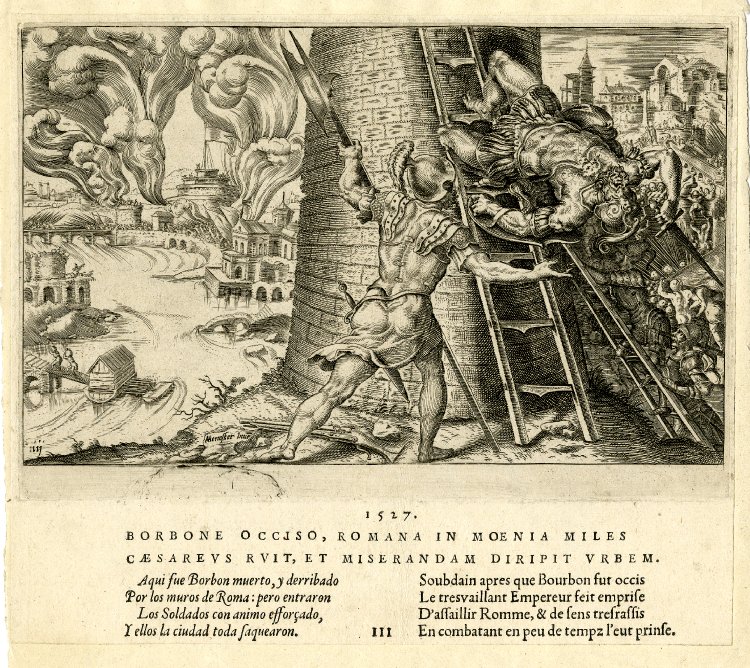
What is more, it was the Holy Roman Empire army of King Karl V that did it.
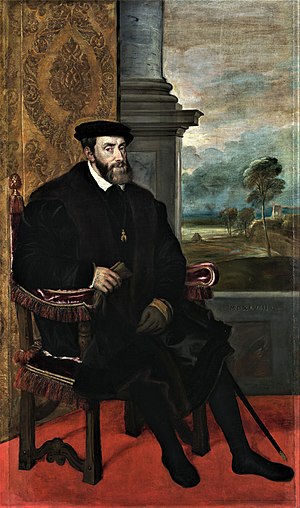
Carl V was the emperor of two countries, Spain and the Holy Roman Empire. In other words, he was the head of a fervently Catholic country. The fact that the leader of this Catholic kingdom had so thoroughly destroyed and looted the Holy See, the Vatican, made my head spin.
That said, I have always understood that Spain used its gold after the discovery of the Americas to spend vast sums of money and effort to promote Catholic prosperity and counter the Reformation.
It is true, but can you imagine the Holy Roman Empire of Spain looting and destroying the Vatican, the headquarters of Catholicism?
It is too long a story to tell here why this happened, but for me, the event was a shock. I had probably seen the Sacco di Roma before in my study of Christian history, but I had never realized the gravity and seriousness of this event. However, I had never realized the gravity and seriousness of this event. It was not until I read this book that I understood its significance. In that sense, too.Rome of the Popes.has been a work that has overturned my previous view of Christianity.
And the reference listed in that "Rome of the Popes" was by André Chastel.The Tragedy of the Holy City, 1527.becomes.
In "Rome of the Popes," the following was said about the Roman Eunuchs and André Chastel.
As noted in the text, for Protestants, Catholics, and Habsburgs alike, Sacco di Roma is a stain on history, so to speak, and an episode that they do not want to be mentioned.
So in Europe, the case tends not to be discussed in detail in general. In Japan, Chastel's classic research book, which mainly discusses art, was translated in 2006, but the outline of the incident is almost unknown. And it seems that the implications of the case and its impact have never been discussed.
Heibonsha, Masumi Ishinabe, The Popes' Rome: Art and Society in the Renaissance and Baroque, p. 336
It is true that I had never heard of the Sacco di Roma case until I read this book. Moreover, even if I had read about it in a book, it was only a brief description of what had happened. So I had never realized the significance of the incident.
The above circumstances were behind why this case is not talked about very much.
But the work I am presenting now, "The Tragedy of the Holy City in 1527," is a valuable work that discusses such a Sacco di Roma head-on.
The translator's afterword describes the book as follows
The "Roman plunder" of European history may not be so familiar to Japanese readers in general.
Ever since Charles VIII of France advanced his armies into Italy in 1494 to claim Naples, Italy had been the scene of repeated battles between the French and Spanish powers, which played with the smaller states that clustered on the peninsula. The Papacy, the spiritual head of the Christian world, was no exception, and at that time it was also a "state" with a large territory in central Italy.
Clement VII of the Medici family, elected Pope in 1523, failed to balance the political pressures of the two powers through diplomatic maneuvering, leading to the unprecedented catastrophe of Rome, the "capital of the world," being overrun by the troops of King Carl V, who was both Holy Roman Emperor and King Spaene. The "capital of the world," Rome, was overrun by the armies of Carl V, the Holy Roman Emperor and King Spain.
It was less than twenty years after Michelangelo and Raphael began painting the splendid murals that remain in the Vatican Palace today.
In this book, André Chastel, a leading French art historian of the 20th century, discusses this event of the Roman plunder from a broad cultural historical perspective that is not limited to art historical discussions in the narrow sense.
Chikuma Shobo, Rome, by Andre Chastel, translated by Michiaki Koshikawa, Mizue Iwai, Asumi Nakanishi, Maboru Kondo, and Akiko Kobayashiplunder The Tragedy of the Holy City, 1527, p. 456.
*some line breaks.
By Masumi Ishinabe, since this work provides a fairly detailed look at the circumstances of the horrific incident called Sacco di Roma.Rome of the Popes.I would highly recommend it in conjunction with
And it was Bernini who was born at a time when Rome was gradually recovering from the devastation caused by such horrific events.
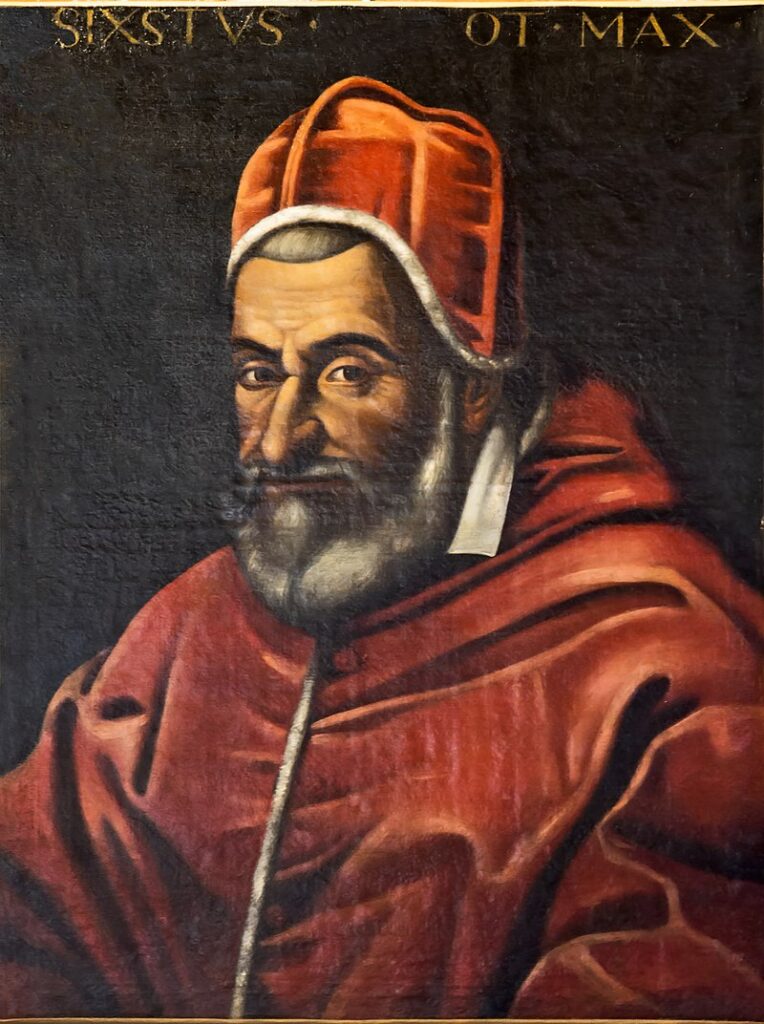
In particular, Sixtus V, who built a series of church buildings and public facilities, is a symbolic figure of Rome's revival. And what is interesting is that in the commentaryGregory XIII, Sixtus V's predecessor, is reported to have said that construction was a mercy to the people that all monarchs had to do, that their work helped people's lives. In Rome, an almost entirely consumer city with no significant industry, construction was the only industry that seemed to be an industry at all."That's the word.
Rome had no industry other than civil engineering and construction. The city of Rome had tried many times to develop industries such as manufacturing, but they were unsuccessful, and in the end, no industry was born in Rome. This is why construction projects were actively pursued. Building a huge cathedral may seem like a waste of money for the Vatican. However, it is not that simple. There was also the aspect of public works to support the citizens of Rome. The Vatican, where wealth was gathered from all over Europe, was thus supporting the citizens of Rome. Religion is not only religion. This is what makes it interesting to look at the background of the times.
Finally, in Rome at the end of the 16th century, outstanding artists such as Maderno, Carracci, and Caravaggio began to emerge. This new wave of art finally arrived in Rome. There, a world-class genius of Mozart's caliber was born. The background of the times and his birth coincided perfectly! It is nothing short of a miracle.
Bernini's patron, Sipione Borghese, a precocious genius.
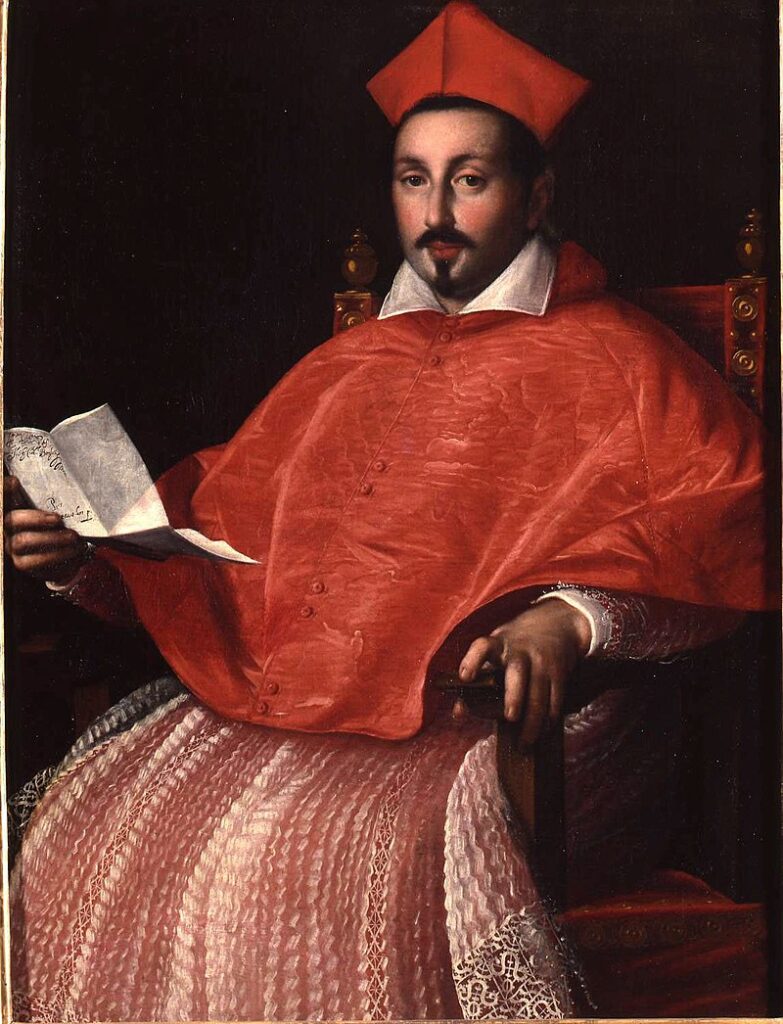
Cardinal Sipione Borghese, nephew of Paulus V, who became Pope in 1605, became a strong patron of the prodigy Bernini. The Borghese Museum in Rome today is based on this man's collection and contains numerous Bernini works. I will talk about this museum again in the next article.
Let us see how the child prodigy Bernini spent his days under the patron's encouragement.
Paulus V's predecessor, Leo XI, a Medici, died after only 26 days on the papal throne. In contrast to his predecessor, Paulus V, who was a robust man and elected Pope at the young age of 53, reigned in Rome for more than 15 years. During the reign of Paulus V, the art environment in Rome underwent a major transformation. The pragmatism that had dominated the previous era was overcome by a new awakening to beauty, as patrons and collectors of fine taste grew. Central to this transformation was the Pope's nephew, Sipione Borghese, who was ordained a cardinal at the young age of twenty-seven. The young Bernini caught the attention of Sipione Borghese and was brought up by him.
There are several episodes that remind us of the child prodigy Bernini was at that time. The most dramatic of these is the story of when Sipione Borghese brought the young Bernini before the Pope. Bernini was asked to paint the head of St. Paul, which he did beautifully, earning him great praise. Paulus V then said to the cardinal, who was present, "Let us hope that this child will be the Michelangelo of his century. The Dominican tells us that the 12 gold medals that the Pope gave him as a reward on that day are still kept at home as a souvenir.
According to Bernini himself, when the Pope saw the head of St. John in his hand, he could not believe that it was the work of a young child and asked him to paint St. Paul before his eyes. This happened when he was eight years old, Bernini said.
Also, when Urbanus VIII, who later became Bernini's greatest patron, was still a cardinal, he looked at his eight-year-old work and said to Pietro with a laugh, "Be careful, Mister Bernini. This child will surpass you and definitely surpass his master. The father replied, "I don't care about that. As you know, in this game, losing is winning. This is a bit of a fiction, but it is also a story that Bernini himself told Chantreau.
According to Domenico, the artist Annibale Carracci, who was a great admirer of Bernini's, admired the young artist's work, saying that he had reached at such a young age what others had reached only at an older age. The truth of this story is not known, but it seems certain that Bellini knew the master in his last days.
Masumi Ishinabe, Yoshikawa KobunkanBernini, Giant Star of Baroque Art.p6-7
Let us hope that this child will be the Michelangelo of his century."
These words of Paulus V will come true just like a prophecy. Bernini became the Michelangelo of the 17th century.
Bernini's prodigy is nothing short of astonishing. Bernini lived a life of longevity, which was rare for his time (and, not surprisingly, for Michelangelo as well). From the very beginning of his long life, he had already shown outstanding talent. It is a marvel that he caught the eye of the aesthetically astute patron, Borchese. Moreover, he was able to communicate with various influential people without fear when he met them under his guidance. He is a child to be feared.
I hope this article has conveyed how outstanding Bernini was.
The next article will introduce this patron's museum, the Borghese Gallery. Here, Bernini's early works are all on display. There is no better place to learn about his start as an artist. I was simply amazed at the works that already showed the spark of genius at such a young age.
be unbroken
*The list of articles in the "Rome Travel Journal" can be found atCategory page hereindicates direction or goal (e.g. "to")
*Please visit this category page for recommended books to learn about Rome and Italy.
The Rise and Fall of the Roman Empire, the Vatican, and Roman Catholicism."
The Italian Renaissance and the Revolution in Knowledge."
Next Article.
Click here to read the previous article.
Related Articles











